Cold Plate Cooling Systems: Design, Optimization, and Application in High Density Electronics
Team Expert Thermal2025-07-21T17:35:47+00:00Cold Plate Cooling Systems: Design, Optimization, and Application in High Density Electronics
Building on our comprehensive exploration of liquid cooling systems in our earlier blog, this edition focuses on the most critical and performance defining component within these systems: the cold plate.
Cold plate cooling systems are revolutionizing how high-performance electronics manage heat in demanding environments. In this guide, we take a deep dive into the design, performance, and applications of liquid cold plates, which are essential for thermal management in industries like data centers, telecommunications, aerospace, and defense.
Liquid cold plates act as high-efficiency heat exchangers, using precision microchannels to direct coolant across critical components. This allows them to remove heat faster and more evenly than traditional air-cooled systems—making them ideal for modern electronics where power density is high and space is limited.
By delivering localized cooling right at the source, cold plates help maintain safe temperatures for processors, GPUs, memory modules, and other high-density electronic devices, even under heavy workloads. As devices continue to shrink while generating more heat, cold plates have become essential for maintaining long-term thermal performance and system reliability.
In a typical setup, cold plates transfer heat from the electronic component into a flowing liquid coolant. The heated coolant is then pumped to a remote heat exchanger, where it releases thermal energy either to the surrounding air or into a secondary cooling loop. This closed-loop cooling architecture supports both targeted heat removal and improved system-level energy efficiency.
Importantly, cold plates contribute to improving data center energy metrics such as Power Usage Effectiveness (PUE). With modern data centers targeting a PUE of less than 1.3, advanced liquid cooling strategies such as the utilization of cold plates are essential to achieve such efficiency benchmarks. There are different designs of cold plates that rely on either single phase or two-phase cooling fluids and the design can be optimized for a specific cooling fluid to maximize heat removal from heat sources.
How does it work?
Cold plates are the foundation of today’s most effective liquid cooling systems. Unlike traditional air cooling, which depends on bulky heatsinks and fans to transfer heat through convection, cold plates use a closed-loop liquid cooling approach. This method draws heat directly away from high-power components such as CPUs, GPUs, memory modules, and power electronics with much greater efficiency.
The key to their performance lies in the circulation of coolant through precision-engineered microchannels built into the cold plate. As the fluid flows beneath the heat-generating device, it absorbs thermal energy and carries it to a remote heat exchanger for safe dissipation. This direct liquid-to-surface contact provides faster, more uniform heat removal—resulting in tighter temperature control, improved system reliability, and longer lifespan for electronic components.

Figure 1. (Cold plate model)
A typical cold plate consists of two main structural components:
The base, which includes the machined or molded microchannel heat exchanger, and
The top cover, which encloses the fluid channels and integrates the inlet/outlet connectors.
These two components are permanently joined using a process (e.g., brazing, diffusion bonding, welding) optimized for the chosen material, usually aluminum, copper, or advanced composite alloys. This joint must remain liquid tight throughout the system’s service life, even under pressure, vibration, or temperature cycling.

Figure 2. [Cold plate design]
Tubing is connected to the fluid ports in the top cover, enabling inlet and outlet flow paths for coolant circulation through the internal channels.
The cold plate base is designed to make direct contact with the target device (e.g., processor or power module). To minimize interfacial thermal resistance, a TIM2 material (Thermal Interface Material, typically pad or paste) is applied between the device and the cold plate. This ensures intimate surface contact, maximizing the conduction of heat into the liquid cooled microchannels just beneath.
Key Details That Make the Difference
High Thermal Conductivity Materials
Most cold plates are manufactured using copper or aluminum, chosen for their excellent thermal conductivity. Emerging designs may also integrate graphite composites or other advanced materials to reduce weight while enhancing performance.Channel Geometry Optimization
The design and topology of internal flow channels significantly influence coolant velocity, pressure drop, and thermal uniformity. Microchannel density, fin geometry, and turbulence promoters are meticulously tuned to meet application specific heat flux requirements. Achieving an optimal balance between thermal performance and hydraulic resistance requires deploying multiple optimization methodologies tailored to the level of geometric flexibility and complexity:
Sizing Optimization
Sizing optimization focuses on tuning a finite set of discrete or continuous parameters that define the component’s geometry, such as channel width, fin height, spacing, and wall thickness. These parameters often correspond to those found on technical drawings and CAD models.
Continuous variables (e.g., channel width in mm) allow for gradient based optimization methods (e.g., Sequential Quadratic Programming, BFGS (Broyden–Fletcher–Goldfarb–Shanno)).
Discrete variables (e.g., number of channels or fin rows) typically require global search techniques such as genetic algorithms (GA), particle swarm optimization (PSO), or simulated annealing (SA).
Use case: Selecting optimal fin pitch and channel depth in a cold plate to achieve target pressure drop under a given flow rate.
Shape Optimization
Shape optimization refines the internal and external surfaces of the cooling structure to enhance flow distribution or minimize hotspots. Unlike sizing, shapes are described using continuous functions of space (e.g., Bezier curves, Basis-splines), making the design space infinite dimensional.
Optimization is typically performed using adjoint based sensitivity analysis, where gradients are computed with respect to local shape perturbations.
Mesh morphing or boundary deformation techniques are commonly used in CFD coupled frameworks.
Use case: Optimizing inlet and outlet manifolds to reduce recirculation zones and improve flow uniformity across parallel microchannels.
Topology Optimization
Topology optimization provides the highest degree of design freedom by allowing material to be added or removed anywhere within the design domain. This results in non-intuitive layouts with perforations, internal voids, and branching structures drastically improving thermal-hydraulic performance.
Two major techniques:
Density based methods: Introduce a continuous density field to interpolate material distribution.
Level set methods: Use implicit functions to track evolving interfaces, enabling cleaner geometry extraction.
These are often implemented with penalization schemes (e.g., SIMP: Solid Isotropic Material with Penalization) and require regularization for manufacturability.
Use case: Designing a heat sink with branched or tree like channels for minimal thermal resistance under spatial constraints.
Hybrid and Multi Objective Approaches
In practice, optimization often involves multi objective trade-offs between thermal resistance, pressure drop, weight, cost, and manufacturability. Hybrid approaches combine different techniques (e.g., topology optimization followed by local shape tuning), supported by surrogate modeling (e.g., Kriging, neural networks) to reduce computational load.
Use case: Jointly optimizing thermal and structural performance for a cold plate in high-G environments (e.g., avionics cooling).
Form Factor and Application Fit
Larger plates naturally provide more surface area for heat transfer, but optimal effectiveness comes from balancing size, weight, and performance needs. In weight sensitive applications like aerospace, low mass composites may be prioritized over high conductivity metals.Customization by Industry
Data centers prioritize thermal efficiency and corrosion resistance; aerospace values lightweight, vibration tolerant designs, and telecom systems require high reliability in compact formats. Cold plate design must meet the unique thermal and mechanical constraints of each sector.
Advantages of Cold Plate Liquid Cooling
Superior Heat Transfer Performance
Liquid cooling is orders of magnitude more effective than air cooling. Due to the higher density and specific heat capacity of liquids compared to air, a significantly lower mass flow rate is needed to achieve the same thermal transfer. This allows for compact and efficient thermal designs that handle much higher power densities. The micro channel liquid cooling plate has the advantages of high convective heat transfer coefficient, high ultimate heat dissipation density, low thermal resistance
Compact and Lightweight Electronics
By offloading heat via coolant flow to a remote location, cold plate systems reduce the need for bulky heat sinks or fans on the electronics themselves. This translates to smaller, lighter systems—a key benefit in space and weight constrained applications such as military, aerospace, and mobile systems.
Higher Electronic Performance
Thermally stable operating conditions allow semiconductors and processors to operate closer to their performance ceiling without derating. In high performance computing, power electronics, and RF systems, this can directly translate to increased throughput, precision, and reliability.
Remote Heat Rejection and Reuse
Because the heat exchanger is decoupled from the electronics, waste heat can be rejected at a distance—outside the enclosure, the building, or even redirected to warm another subsystem. This opens up opportunities for thermal reuse and energy efficiency optimization in broader system design.
Caveats and Design Trade-Offs
System Complexity and Integration Overhead
While electronics are becoming more compact, liquid cooling systems often require additional components—like cold plates, pumps, heat exchangers, and tubing—which add size and complexity. Some setups also need expansion tanks or pressure regulators to manage coolant expansion, increasing both design effort and overall system cost.
Leak and Corrosion Risk
Liquid cooling introduces mechanical connections (fittings, joints, tubes, brazes) that pose leak risks. Water is an excellent coolant but introduces freezing and boiling constraints unless treated with glycol. However, glycol reduces heat capacity. Alternative coolants (e.g., ammonia or dielectric fluids) may offer performance or electrical insulation benefits, but often come with toxicity, corrosivity, or flammability concerns.
Maintenance and Serviceability
Cold plates rely on narrow internal channels. These can accumulate debris, corrode, or clog over time. Most cold plates have non-serviceable internal geometries—machined, brazed, or printed—making proactive filtration, corrosion control, and system flush protocols essential to avoid irreversible performance degradation.
Pumping Power
Microchannel cold plates achieve very high heat transfer coefficients and low thermal resistance, but at the cost of increased flow resistance. As channel dimensions decrease to enhance heat dissipation, pressure drop rises significantly, demanding more powerful pumps and higher energy consumption. The design requires careful consideration of flow distribution and pressure drop across the network.
Cold Plate Assembly: Components and System Integration
A complete cold plate cooling solution extends beyond the cold plate itself. It includes a supporting assembly of fluid distribution components, connectivity hardware, and optional safety systems that ensure seamless integration, maintainability, and operational reliability
Key Components of a Cold Plate Assembly:
Cooling Fluid Tubing
Tubing connects the cold plate to the larger liquid cooling loop, enabling continuous coolant flow.
Metallic options (e.g., copper, aluminum) offer mechanical durability and high thermal resistance.
Non-metallic options (e.g., PTFE, PEX, EPDM) offer flexibility and chemical compatibility.
Tubing material selection must match the cold plate fluid connector type, and system requirements such as bend radius, thermal range, and chemical resistance.
Quick Disconnects (QDs)
These allow rapid isolation of the cold plate and fluid lines for routine maintenance or equipment servicing without draining the entire system. QDs are critical for datacenter uptime and serviceability.
Conversion Connectors (Optional)
Serve as adapters between fluid tubing and quick disconnects, enabling compatibility across diverse fluid connector geometries and tubing standards.
Leak Detection Systems
Integrating a leak detection cable or rope wrapped around fluid tubing and connectors—enables early detection and alarms in case of fluid leakage. This is essential for protecting downstream electronic equipment and minimizing downtime in sensitive environments like data centers.

Figure 3. [Cold plate assembly]
Traditional Cold Plate Manufacturing
Cold plate heat exchangers are manufactured using several techniques, including brazing, friction stir welding (FSW), soldering, and O-ring sealing—each offering distinct advantages based on performance, cost, and reliability needs. Brazing supports high-pressure operation and allows for integrated fin structures, but it can be expensive and causes copper annealing, which reduces structural strength. FSW avoids annealing and enables strong, monolithic construction, though it requires more material and processing time, increasing overall cost. Soldering is more affordable and avoids thermal softening, but it may result in brittle joints, voids, and limitations with certain fin geometries like skived fins. The choice of assembly method depends on application-specific trade-offs between thermal performance, mechanical integrity, and manufacturing cost.

Figure 4. [Cold plate (ToffeeX)]
Topology-Optimized Custom Cold Plate Channels
Traditional cold plate designs typically use straight or uniformly curved cooling channels with consistent cross-sectional geometry. While simple to manufacture, these designs introduce several performance limitations that hinder cooling efficiency:
- Inefficient Heat Transfer
Conventional channels provide limited surface area contact between the coolant and the heat source. This reduces convective heat transfer, leading to suboptimal thermal performance, especially in high-power or non-uniform heat flux applications.
- Restricted Flow Characteristics
Sharp turns and uniform geometries in conventional designs contribute to flow separation and turbulence, restricting coolant velocity and increasing pressure drop. This results in lower flow rates and compromised thermal transport capacity.
- Non-Uniform Cooling Distribution
Because standard channels do not account for spatial variations in heat generation, coolant is evenly distributed, regardless of local heat flux. This causes hotspots in high load regions and overcooling elsewhere—wasting cooling capacity and jeopardizing system reliability.

Figure 5. [Thermal design of composite cold plates by topology optimization]
Topology optimization leverages computational algorithms to design fluid pathways tailored for specific thermal and flow objectives. Rather than adhering to geometric simplicity, this method generates non-intuitive, high performance channel architectures that are often only manufacturable using additive manufacturing (AM) or advanced machining.
- Enhanced Heat Transfer Efficiency
Custom optimized channel paths maximize contact area and target high flux zones, substantially increasing heat removal. The result is more effective and faster cooling compared to traditional layouts.
- Increased Flow Rate, Lower Pressure Drop
By minimizing sharp turns and optimizing fluid velocity profiles, topology-optimized channels reduce flow resistance. This enables higher coolant throughput at a lower pumping power, improving both cooling efficiency and system energy consumption.
- Uniform Cooling Across the Component
Unlike uniform channel designs, topology-optimized layouts adapt coolant flow distribution to match localized heat generation. This ensures temperature uniformity, eliminates hotspots, and maximizes thermal utilization across the cold plate footprint.
Manufacturing Freedom with metal 3D printing
While topology optimization can significantly enhance thermal and hydraulic efficiency, unlocking its full potential requires manufacturing techniques that exceed the limits of conventional fabrication. Traditional machining struggles with the complex internal geometries produced by topology-optimized designs. That’s why metal additive manufacturing (AM)—particularly Laser Powder Bed Fusion (LPBF) and Electron Beam Melting (EBM)—has become essential for producing advanced cold plate cooling systems. These technologies offer the geometric flexibility and precision control needed to realize intricate fluid channels, internal manifolds, and organic shapes with high repeatability. By enabling performance-driven design unconstrained by traditional manufacturing, AM makes it possible to build next-generation cold plates tailored for extreme thermal demands.
- Complex Internal Channel Fabrication
Topology optimized channels often feature non-planar, spatially varying cross-sections, branched micro-pathways, and gradual transitions that are not feasible with CNC machining or traditional brazing. Metal AM enables:
- Internal bifurcations, multi scale channels, and embedded manifolds.
- Monolithic construction, eliminating interface resistances and leak prone joints.
- Precise control over local wall thickness and porosity, supporting tailored thermal behavior.
This unlocks design for performance, where the geometry is driven by physics and not by fabrication constraints.
- Performance to Weight and Volume Advantages
With Additive Manufacturing, designers can:
- Integrate lattice supports or conformal cooling passages into thermally critical regions
- Maintain structural integrity while reducing weight and volume, essential for aerospace and high density electronics
- Consolidate multiple cooling components (e.g., channels, manifolds, mountings) into a single part, improving reliability and reducing assembly time
- Improved Cooling Efficiency via Design Adaptation
By coupling topology optimization algorithms with AM compatible constraints (e.g., overhang angles, powder removal ports), cold plates can be fabricated that:
- Match coolant delivery to heat flux gradients
- Reduce thermal resistance and pumping power simultaneously
- Withstand cyclic thermal and pressure loading through tailored material deposition and post-processing treatments (e.g., HIP for density enhancement)
- Validation and Standards Alignment
3D printed cold plates can undergo the same rigorous reliability testing (e.g., ASTM B117 for corrosion, IEC 62368-1 for pressure) as traditionally fabricated units. Additionally, in-situ monitoring and non-destructive evaluation (e.g., CT scanning) ensure build quality and defect detection before deployment.

Figure 6. [Liquid-cooled cold plate for automotive power electronics]
Key Thermal Considerations for Liquid Cold Plate Design
Establishing component level Thermal Mapping
The first design step is developing a thermal map. This acts as a blueprint for the entire system and It identifies the hot spots and heat distribution across the device. This step includes:
- The size, location, and power dissipation of each component
- Allowable surface temperatures (global or per component)
- Coolant properties: type, flow rate, and inlet temperature
- Total available pressure drop across the cold plate
- Compute local heat fluxes including thermal spreading effects within the base plate.
A well constructed thermal map is the strategic foundation that informs channel layout, flow balancing, and heat exchanger geometry.
Critical Inputs for evaluating Thermal Performance:
Developing a custom cold plate design starts with understanding key thermal and hydraulic inputs. These core factors directly influence the architecture, flow path strategies, and the overall design complexity of the cold plate. By aligning performance requirements with physical constraints, engineers can make informed decisions early in the design process. The matrix below summarizes the most critical design drivers and how they affect system complexity, serving as a practical guide for optimizing both performance and manufacturability.
| Design Driver | Possible Conditions | Design Implication | Resulting Complexity |
|---|---|---|---|
| Heat Flux Distribution |
- Uniform - Localized Hot Spots - Strongly Non-uniform |
Determines whether basic routing suffices or localized cooling is needed | Low → High |
| Surface Temperature Limits |
- Single Global Limit - Varying Per Component/Zone |
Requires thermal zoning, tailored fluid paths | Low → Medium–High |
| Temperature Uniformity Requirements |
- No Uniformity Needed - Local Uniformity (per component type) - Global Uniformity |
Drives use of parallel paths, counter-flow, or multi-layer routing | Medium → High |
| Coolant Flow Rate (Fixed vs. Flexible) |
- Fixed by system constraints - Adjustable during design |
Fixed flow requires more precise optimization of channel network | Medium |
| Maximum Allowable Pressure Drop |
- Tight constraint - Moderate constraint |
Restricts allowable fin density, path complexity | Medium → High |
| Component Footprint Constraints |
- Evenly spaced components - Asymmetrical or clustered layout |
Impacts fluid distribution symmetry, channel tuning | Low → Medium |
| Mounting, Inlet/Outlet Constraints |
- Flexible port placement - Fixed ports/mounting holes |
Influences circuit routing freedom and manufacturability | Medium → High |
Detailed Thermal Analysis:
Once the design condition is identified, the next step is to perform the detailed thermal analysis with the material selection (Aluminum, Copper or composite material) and develop liquid flow network. This step includes:
- Calculating the surface temperature beneath each component
- Evaluating the total pressure drop across the cold plate
- Identifying any hot spots or flow inefficiencies
If design targets are not met, the fluid path is rerouted and optimized. This may involve resequencing the flow, bypassing low priority regions, or redistributing coolant to high-risk components.
When surface temperature uniformity is required, the design becomes more intricate. Two key strategies help achieve this:
- Parallel Flow: Positioning identical components along equally conditioned parallel flow paths to ensure consistent inlet temperatures.
- Counter Flow: Alternating flow direction in adjacent channels (e.g., serpentine layouts) to reduce temperature gradients across the plate.
In more advanced designs, multi layer fluid channels may be used to improve spatial control of the heat removal path.
Design for Manufacturability: Cost Drivers
Complex cold plates can be costly, especially when mechanical constraints force inefficient routing. Common cost drivers include:
- Fixed inlet/outlet positions
- Obstructive mounting hole locations
- Multiple fin geometries or cavity depths
- EDM or multi step machining requirements
To mitigate this, it’s crucial to maintain design flexibility. By collaborating early with electrical and mechanical engineers, thermal designers can influence component placement and allow for more efficient fluid path integration. This often leads to better thermal outcomes and lower manufacturing costs.
Coolant Selection
The choice of coolant plays a vital role in the performance and reliability of cold plate systems. The coolant must not only absorb and transport heat efficiently but also be compatible with the materials and operating conditions of the system.
Common liquids used in closed loop cold plate cooling systems include:
- Deionized water: excellent thermal performance but requires careful material compatibility
- Inhibited glycol/water mixtures: widely used for freeze protection and corrosion resistance
- Dielectric fluids: synthetic, non-conductive oils ideal for direct contact with sensitive electronics
- Custom heat transfer fluids: engineered for niche applications requiring specific thermal or chemical properties
Selecting the right coolant involves trade-offs between thermal conductivity, viscosity, electrical conductivity, environmental compatibility, and long term stability. The system design must account for these properties to ensure optimal flow rates, heat capacity, and corrosion control.
Reliability Testing for Cold Plates
Ensuring the long-term reliability of liquid cold plates, especially in mission-critical applications such as aerospace, telecommunications, and defense, requires a comprehensive set of qualification protocols. To confirm durability across thermal, mechanical, and fluidic domains, engineers rely on both non-destructive and performance-based testing. These methods complement traditional procedures like hydrostatic pressure tests, corrosion resistance evaluations, and dynamic stress analysis, offering a complete assessment of cold plate integrity before deployment.
- Leak Testing
Leak integrity is paramount for liquid cooled cold plates to prevent fluid ingress into electronics or pressure loss in closed loop systems. Industry standard methods include:
- Pressure Decay Testing
Standard: EN 1779
Approach: The cold plate is pressurized (typically with dry air or inert gas), sealed, and monitored for pressure loss over time.
Acceptance Criteria: A pressure drop of less than 0.5% is considered acceptable under EN 1779 for high-integrity joints.
Application: Final QA before shipping, especially for aluminum-brazed or friction-stir welded assemblies.
- Immersion Bubble Testing
Standard: EN 1779
Approach: Cold plates are pressurized and submerged in a fluid bath; visual inspection for bubble streams identifies leak points.
Strength: Localizes microleaks; fast visual assessment.
- Hydrostatic Burst & Proof Testing
Standard: IEC FDIS 62368-1(8)
Approach:
Test at 1× Maximum Operating Pressure (MOP) for 5 min (proof).
Test at 3× MOP for 2 min (burst validation).
Application: Ensures mechanical robustness of internal flow channels and connector weld joints. Essential for telecom or automotive grade cold plates.
- Flow and Thermal Testing
To validate the cooling performance, both hydraulic resistance and thermal effectiveness must be characterized under operational conditions.
- Flow Testing
Objective: Quantify pressure drop vs. flow rate (ΔP–Q) to generate a hydraulic performance curve.
Setup: Flow bench using calibrated mass flow controllers and differential pressure transducers.
- Thermal Testing
Objective: Determine thermal resistance (Rth) or temperature rise (ΔT) under known heat flux.
Test Conditions: Inlet coolant temperature, flow rate, and applied heat load are standardized.
Standard Practice: Post-environmental stress testing to detect thermal degradation, often compared to baseline performance.
Application: Confirms consistency across production units and compliance with system-level cooling specs. Required for defense and aerospace electronics cooling.
- Visual Inspection
A foundational QA step, visual inspection identifies macroscopic defects that may compromise structural or aesthetic quality.
- Scope of Evaluation:
Surface finish uniformity (post-anodizing or coating)
Weld bead continuity and discoloration (especially for laser or FSW joints)
Presence of burrs, cracks, or voids in inlet/outlet fittings or channels
Misalignment of thermal interface plane
- Relevant Standards:
IPC-A-610 (Electronic Assemblies)
ISO 8785 (Surface Imperfections)
- Ultrasonic Testing (UT)
Used primarily for non-destructive detection of internal defects in bonded or welded cold plates.
- Standard: ASTM E2375 (Bonded Structures), ASTM E317 (Contact UT)
- Technique: High-frequency ultrasonic pulses are transmitted through the part; reflections are analyzed for indications of:
- Delaminations
- Lack of fusion in weld zones
- Porosity or foreign inclusions
- Methodologies:
Pulse echo mode for flat panels
Immersion UT for complex geometries
C-scan imaging to visualize sub surface anomalies
Application: Critical in validating friction stir welded cold plates or those with multi layer diffusion bonds. Aerospace and medical device standards increasingly mandate UT as part of quality documentation.
- Salt Spray Testing (Corrosion Resistance Evaluation)
Salt spray testing is a standardized accelerated corrosion test that evaluates the durability of exterior surfaces, coatings, and protective treatments applied to cold plates under aggressive environmental conditions. It simulates long term exposure to saline atmospheres, particularly relevant for marine, industrial, and coastal applications.
- Test Standard
ASTM B117 – Standard Practice for Operating Salt Spray (Fog) Apparatus
This is the global benchmark used to assess the corrosion resistance of metallic coatings (e.g., anodized aluminum, electroless nickel, passivated stainless steel) under continuous salt laden fog.
Application: Outdoor telecom and industrial enclosures: Validates surface treatment durability under cyclic exposure to saline mists and condensation.
Liquid Cooling for Tesla Dojo D1
The Tesla Dojo supercomputer pushes the boundaries of AI performance and with it, the limits of thermal design. At the heart of each Dojo training tile lies a 5×5 array of custom D1 InFO-SOW packages, each measuring 25.4 mm × 25.4 mm × 0.7 mm and dissipating up to 400 watts of power. This configuration yields an immense thermal footprint of 10 kilowatts for InFo-SoW and 15kW with the VRM and other components per tile, demanding highly efficient and localized cooling solutions.
To handle this demand, Tesla uses an advanced direct liquid cooling architecture. Each tile is paired with a precision-machined cold plate, separated by a 7.5 mm thermal divider between chip regions. These cold plates feature ultra-thin microchannels—just 100 microns thick—engineered to maximize surface area and boost convective heat transfer at the chip level.
A Phase Change Material (PCM) based Thermal Interface Material (TIM) bridges the D1 die and the cold plate, ensuring minimal thermal resistance and accommodating thermal expansion while maintaining consistent contact.
To keep junction temperatures below 85°C, coolant is circulated at flow rates between 1.0 and 1.5 liters per kilowatt per tile. This cooling strategy supports Tesla’s dense, high-performance compute arrays and reflects a growing trend in AI hardware design: systems that are modular, scalable, and thermally optimized at the component level. The Dojo cooling architecture represents the forefront of chip-level liquid cooling, where thermal constraints are no longer managed just at the system level, but engineered directly into the silicon packaging and interconnect structure.
Future Outlook: AI Driven Design, Digital Twins, and Emerging Applications
Integration with AI Assisted Design
Designing cold plates requires balancing thermal performance, hydraulic resistance, manufacturability, and reliability. This complexity makes them ideal for AI-assisted optimization. Instead of relying on traditional parametric sweeps, engineers are increasingly using data-driven design loops powered by machine learning (ML) and deep learning (DL) models.
These systems can:
- Predict thermal and flow performance across vast design spaces in milliseconds using surrogate models.
- Accelerate inverse design, where desired performance metrics (e.g., target ΔT, maximum Rth, allowable ΔP) are used to generate optimal geometries.
- Continuously learn from test data, CFD simulations, and field performance to improve future iterations.
By integrating neural networks, evolutionary algorithms, and Reduced Order Models (ROMs), AI can co-optimize not only cold plate internals but also system level parameters such as pump sizing, TIM selection, and flow routing. This transition from deterministic simulation to generative AI guided design is already showing 10–50x speedups in early stage engineering workflows.
Use of Digital Twins for Adaptive Cooling
Digital twins are virtual replicas of physical systems that mirror their behavior in real time. They are redefining thermal control strategies. In liquid cooled systems:
- Live sensor data (flow rate, pressure drop, temperature) can be fed into a digital twin to diagnose inefficiencies or predict impending failures.
- Predictive models can simulate different load scenarios and proactively adjust pump speeds or valve positions to maintain thermal safety.
- What-if simulations enable thermal engineers to explore future workload patterns, ambient conditions, or component upgrades without physical prototyping.
For high-value applications such as hyperscale data centers or aerospace electronics, the cold plate is no longer just a passive component. It becomes part of a closed loop thermal intelligence system that adapts in real time to maximize cooling efficiency and system uptime.
Long Term Potential in EVs, Edge AI, and 6G Hardware
As electronics continue to evolve, cold plates are poised to expand far beyond their traditional strongholds. Emerging frontiers include:
Electric Vehicles (EVs): Power inverters, onboard chargers, and high voltage battery junctions are demanding compact, rugged, and efficient liquid cooling. Cold plates tailored for under the hood environments—subject to vibration, wide ambient swings, and rapid load cycling are gaining traction. Additive manufacturing and topology optimization enable low weight, modular solutions ideal for scalable EV platforms.
Edge AI Servers: Unlike centralized data centers, edge deployments require dense compute in thermally constrained environments. Cold plates with integrated quick disconnects, leak detection, and dielectric fluid compatibility enable safe deployment in telecom racks, smart factories, and autonomous infrastructure. AI enhanced cold plate designs ensure high thermal performance without compromising system reliability or physical footprint.
6G Telecom Hardware: The move to higher frequency mmWave and sub THz communications in 6G will increase heat flux at the baseband and radio units. Conventional air cooling will struggle to cope with localized power densities. Cold plates with embedded microchannel networks and ultra-low profile designs will play a critical role in ensuring thermal stability, signal integrity, and long-term equipment reliability.
References:
https://www.neuralconcept.com/post/what-is-a-cold-plate-applications-design-optimization
https://kogappa.com/posts/coldplates/
https://volumes.blog/2022/10/24/liquid-cooling-in-the-datacenter-why-what-how/
https://www.rigidhvac.com/blog/get-in-depth-insight-how-does-cold-plate-work-2024
https://www.chaosnumerics.com/post/custom-cold-plates-for-power-electronics-cooling
https://www.cruiserowaterandpower.com/cold-plate-system/
https://www.boydcorp.com/blog/assessing-the-quality-of-tubed-cold-plates.html
https://www.boydcorp.com/blog/custom-liquid-cold-plate-design.html
https://ig.space/commslink/cold-plates-and-conductive-cooling-a-brief-overview
https://www.qats.com/Products/Liquid-Cooling/Cold-Plates
https://www.compelma.com/en/cold-plates/
https://www.xdthermal.com/understanding-liquid-cold-plates-types-and-selection-guide/
https://www.trumonytechs.com/how-do-liquid-cold-plates-work/
S.-R. Chun, T.-H. Kuo, H.-Y. Tsai, C.-S. Liu, C.-T. Wang, J.-S. Hsieh, T.-S. Lin, T. Ku, and D. Yu, “Info_sow (system-on-wafer) for high performance computing,” in 2020 IEEE 70th Electronic Components and Technology Conference (ECTC). IEEE, 2020, pp. 1–6.
https://toffeex.com/cold-plates/
https://www.xdthermal.com/what-are-the-types-of-cold-plates-used-in-the-new-energy-sector/
https://blog.belimo.com/blog/single-and-two-phase-cold-plate-solutions
https://shop.amstechnologies.com/Products/Thermal-Management/Liquid-Cooling-Components/Cold-Plates/
https://www.kenfatech.com/what-is-the-difference-between-a-heat-sink-and-a-cold-plate/
https://www.columbia-staver.co.uk/thermal-management/liquid-cold-plates/
https://tonecooling.com/what-is-a-cold-plate/


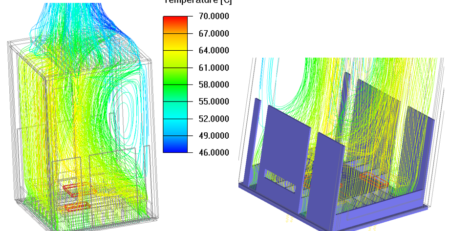


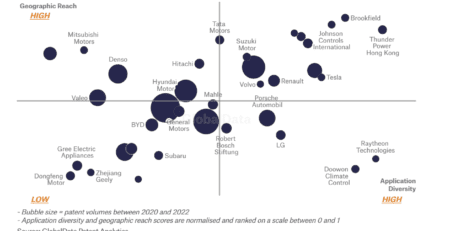

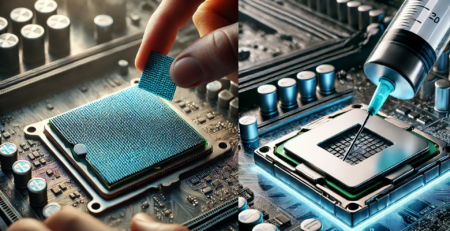

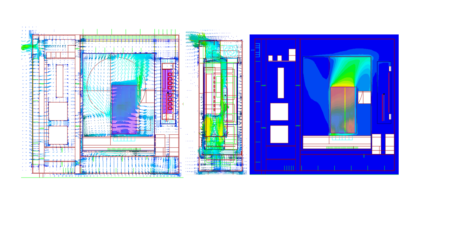

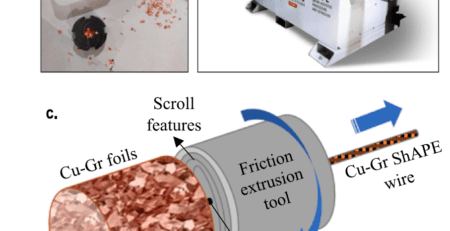
Leave a Reply